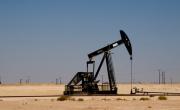Sovereign Wealth Funds are Still a $7 Trillion Gorilla
March 7, 2015
Sovereign wealth funds swelled to a $7 trillion investing gorilla on a rich diet of oil windfalls, so it makes sense that they would lose some punch as oil prices fall. Marc Faber, a Barron’s Roundtable member and the editor of The Gloom, Boom & Doom Report newsletter, stressed at this year’s Roundtable that a tapering of sovereign-fund earnings would undermine global demand for securities in coming years.

Exhibit A for that hypothesis could be Norway’s Government Pension Fund Global, the mightiest fund of them all and one of the most transparent. Created in 1990 to stockpile the country’s earnings from North Sea oil and gas, its assets have fallen by $17 billion since oil prices began to swoon last summer, to $876 billion. Since the government fund owns 1.3% of the world’s equity free float and 2.5% of Europe’s, that does sound like something to worry about.
A dozen other countries have followed Norway by establishing national savings vehicles, which they manage with increasing levels of professionalism and daring. They’ve raised their profile on global markets since the 2008 financial crisis, growing to twice the size of all the world’s hedge funds combined and pouring cash into companies ranging from Citigroup (ticker: C) to Volkswagen (VOW.Germany).
Faber and others worry that these funds might be called on to cover government shortfalls or receive less national support, pulling assets from international markets. In late February, Russia, whose budget was based on $100 oil, said it would tap its Reserve Fund for $52 billion, or over half its value, to narrow a huge deficit.
Russia, however, is an isolated case. Its industry is desperate for funding that has been cut off by Western sanctions over Ukraine. And it wasn’t much of a global player to start with.
The army of asset managers who deploy sovereign wealth and speak for the press-shy funds, insist there’s no reason for other investors to sweat. “These funds set investment policy on a three-to-five-year horizon,” says Patrick Thomson, who heads JPMorgan’s global sovereign coverage from London. “They are not going to shift because of a two-month collapse in the oil price.” (Actually, benchmark Brent crude is off 45% to $61.08 from its June 2014 high.)
For starters, 40% of sovereign wealth assets are not dependent on oil-derived funding. China and Singapore, whose economies should benefit from cheaper hydrocarbons, wield more than $2 trillion in all. Two of the heavyweight Middle Eastern funds—the $548 billion Kuwait Investment Authority and $256 billion Qatar Investment Authority—come from countries whose budgets are in balance at the current Brent price of $60, according to JPMorgan. That means they have no reason to raid the funds for domestic purposes. Norway’s monster continues to grow in local-currency terms. Its “losses” stem from the krone’s decline against the dollar.
Most importantly, say those who follow the funds, the recent oil price correction comes after years of the sovereign funds literally raking in more money than they knew what to do with. As recently as the turn of the 21st century, when Brent sold for about $25 a barrel, they were a blip on global markets’ radar screen. Brent hit $50 in early 2005, and has stayed well above that level most of the time since. “Oil prices were above most countries’ break-evens for almost 10 years straight,” observes Francesco Genovese, who heads Middle East operations for Switzerland-based private bank Pictet Asset Management out of Dubai. “They have cash. What they are looking for is an opportunity to invest.”
Sovereign funds are belatedly following other big investors by widening their nets to chase returns. The 2014 edition of an annual survey by fund manager Invesco shows sovereign funds slashing bond holdings by 7% and cash by 25%, pouring that money into stocks and alternatives like private equity and real estate. The firm expects more of the same for 2015, says Nick Tolchard, who heads Invesco’s services to these investors.
REAL ESTATE is in vogue among sovereign funds, specifically marquee commercial objects in destination cities. Norway’s managers committed themselves in 2010 to shifting 5% of the giant fund into property. That’s a goal they are still working on, given the $40 billion involved, says Javier Capape, a professor at Spanish business school Esade who studies sovereign wealth funds. The funds jointly poured $10 billion into London real estate from 2011-13, he figures. “The whole skyline of London is being acquired by these entities,” says JPMorgan’s Thomson.
A few more years of crude oil prices below $50 a barrel could trim their sails, but the managers are not counting on a rebound to the $100-plus levels that prevailed before July, say finance professionals. “People I talk to in the Gulf say $70 to $80 is a fair price for producers and consumers, while $60 to $70 is absolutely fine for the wealth funds,” Pictet’s Genovese says. Brent recently traded at $61.08.
JPMorgan so far projects sovereign wealth funds to march on essentially unhindered, reaching $10 trillion in assets by 2020. The effects will not please everyone. “Investment positions that I have known and loved...have been invaded by sovereign wealth funds,” Crispin Odey, an equities-focused United Kingdom hedge fund manager who controls $11.5 billion, wrote in January.
The best advice for Odey? Get used to it.


